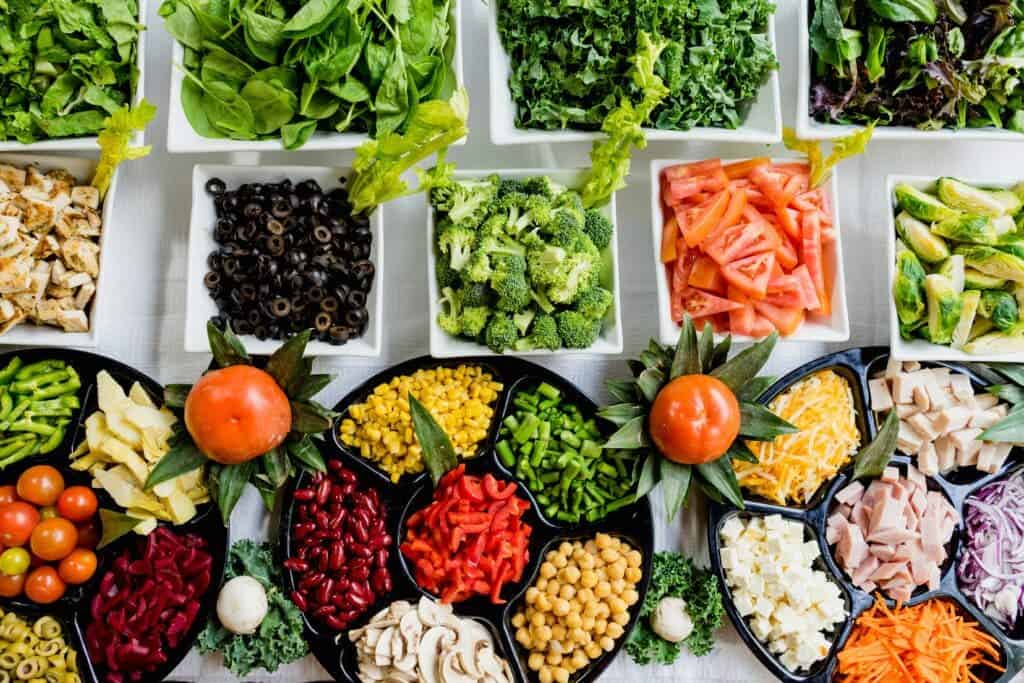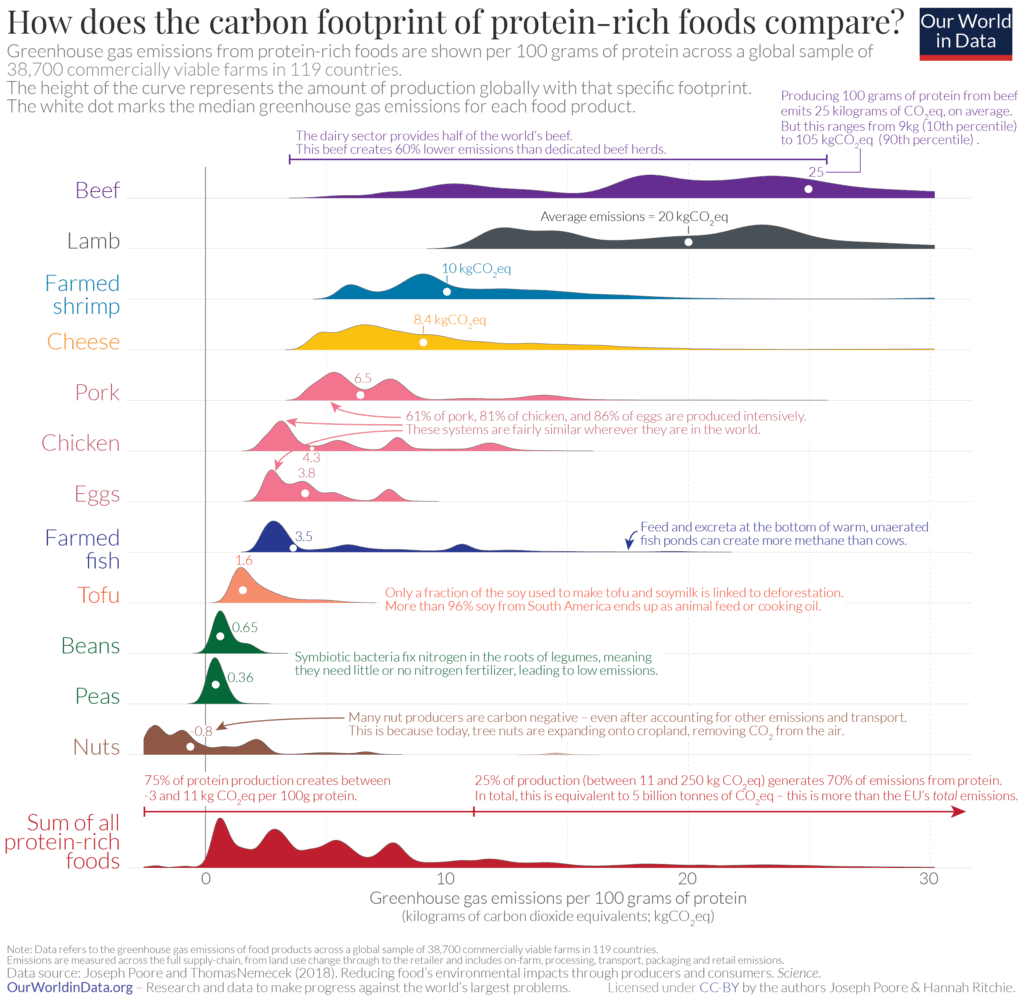
By now, it’s become apparent that if we truly want to reduce global heating, we need to attack it from different angles. Reducing our coal and gas usage and replacing it with renewables is a key aspect, but it’s not the only aspect. Stopping deforestation and planting more trees can also play a role, but that alone won’t stop climate change either.
In fact, research shows that strategies that truly address climate change have to consider an unlikely aspect: what we eat.
Your mouth and climate change
Let’s get one thing out of the way first: the main reason why we’re in such a bad spot in terms of greenhouse gas emissions is our usage of fossil fuels. Just 90 companies are responsible for 60% of all man-made greenhouse gas emissions, and not only did the large fossil fuel companies know about this for decades, they spent billions undermining climate efforts and sowing disinformation about climate change.
Now, the preferred brand of disinformation seems to be pushing consumers to take the blame for climate change. While keeping in mind that we shouldn’t fall for this and we shouldn’t stop pushing these companies to do better and stop interfering with climate progress, there are a few things we regular folk should still consider if we want to play our part as well; one such aspect is food.
Between a quarter and a third of our emissions (estimates vary) come from agriculture — and according to some studies, even these estimates are wildly underestimating the true impact of our diets. Studies vary because some don’t consider emissions from cooking and food waste, and some don’t consider non-food products like leather or wool. But all the studies agree on one thing: food is a big contributor to greenhouse gas emissions.
Some foods are better and some foods are worse — much, much worse.
According to data compiled by Our World in Data from the best studies we have on this subject, unsurprisingly, meat is one of the biggest culprits on our plates. Pound per pound, beef production emits 30 times more than tofu, a popular plant-based protein source, and 100 times more than pea production. Even some of the less bad meat options, like pork, are substantially worse than plant-based options.
Other products, like chocolate or coffee, also have a large carbon footprint — but you’re not eating a pound (or several) of chocolate per day.
To get a sense of how much this is, producing a kilogram of beef from a beef herd emits close to 100 kg of CO2 (220 pounds). Pig or chicken production puts out around 10-12 kg of CO2 (22-26 pounds). Burning a gallon of gasoline produces 20 pounds of CO2 — burning a liter of gas produces 2.4 kilograms. Put it this way: if you take the bus to work one day but eat a hamburger instead of something more sustainable, the two are close to balancing out.
The big meat problem
Of course, there’s a lot of variability across foods. Not all beef is the same, not all burgers and the same, and not all plant-based products are the same, either. But here’s the thing: even the best meat products are typically much worse than their worst plant-based alternatives.
As consumers, the biggest difference we can make is to eat more plant-based sources of protein such as tofu, nuts, peas, and beans. This is the case regardless of where you are in the world,” writes Hannah Ritchie, Head of Research at Our World in Data.

Eating local also makes only a small difference — red meat grown locally is still worse than plants coming from halfway around the world. The majority of greenhouse gas emissions is embedded in the product directly, not in transportation.
Of course, one kilogram of beef also isn’t the same as one kilogram of rice — they have different nutritional properties. But no matter how you look at it, meat does worse. Take calories, for instance:
Even if we look at protein (meat is commonly considered to be important as a source of protein), meat doesn’t do all that well. In fact, there’s a very similar trend that follows a familiar distribution:
So how do different foods compare in terms of CO2?
So if you want to look at how much CO2 there’s in your favorite foods (and you want to do so in a reasonably quick fashion that doesn’t include a lot of calculation), you’re best off looking at the worst offenders on your plate. Is there any beef or lamb? That will likely dwarf anything else. Pork, chicken, fish or cheese are the next in line.
If we consider burning a liter of gasoline as our unit of measure, a cheeseburger would be the rough equivalent of burning 2 liters (over half a gallon) of gasoline. A plain McDonalds burger will be about half that, while a McDonalds plant-based burger will be 20 times less than the cheeseburger.
When it comes to pizza, the calculations become more complex, especially depending on the type of pizza. For instance, one 2022 study found that the carbon footprint for Marinara pizza was equal to that of a cheeseburger, while for Margherita pizza, it was a bit higher, or more than two times higher when fresh cow or buffalo mozzarella cheese was added.
Meanwhile, you can make a plant-based curry that feeds 50 people for the same emissions as a cheeseburger. Even if your curry isn’t super sustainable and still has a little bit of chicken in it, it still rates much better than dishes centered around meat. If the same curry were to include beef, the overall emissions would rise by a factor of 10-15.
Why does raising animals for meat produce so much CO2?
Part of that reason is very straightforward. When animals eat plants, they inefficiently convert the calories they consume to meat. As an approximate rule of thumb, only 10% of the calories an animal consumes are turned into meat calories. Take soy, for instance. The vast majority of the world’s soybean crop is used to feed livestock. This means that the vast majority of this soy is wasted — simply put, eating meat wastes a lot of calories.
The other part of the reason is much more complex. The entire food production system, from fertilizing and farming machinery, to land use and transportation, is an extremely complex process. Grazing animals requires a lot of land, which often means deforestation to make space for the animals. Livestock also produce a lot of methane, a potent (though more short-lived) greenhouse gas.
Chicken and fish have a lower carbon footprint, but they too need to be fed foods, which is in essence a wasteful process.
We don’t need a few perfect vegans. We need a lot of imperfect omnivores who try
The world won’t stop eating meat anytime soon. While trends in some countries show a slight decreasing meat consumption trend, the consumption of developing countries that increase their standard of living is likely to increase substantially.
This is bad news for our climate. But there’s a silver lining: it means we have an opportunity to curb emissions. For regular consumers, tackling a global problem like climate change is often a daunting task and it’s easy to feel powerless — but you have a way to make a difference every day.
Also, because there’s such a big difference between meat and plant-based alternatives – and even between different types of meat – there are multiple ways to make a difference.
Choosing chicken or eggs over beef, for one household, just one day a week, would save about a third of a ton of CO2 per year. If they switch to plant-based alternatives, it’s even better.
In other words, Meatless Monday or other such small initiatives can make a significant difference. With plant-based burgers and blended meat-plant alternatives increasingly competing with meat, it’s also becoming easier and easier to make this change.
Oftentimes, people who want to make a difference go vegetarian or vegan in one go. That’s laudable, and if it works, it’s fantastic! But for many people, maintaining this diet can be daunting, and many feel discouraged and quit. So if you want to make a difference in this sense, but want to be more realistic, an option is simply having one or two meatless days, or opting for options that have less meat — or even opting for chicken instead of beef. Of course, for many it’s also an ethical problem, but in terms of strictly climate emissions, we need as many imperfect people who try as possible. No one’s asking you to give up on your favorite foods, just consider more sustainable options once in a while.
At the end of the day, scientists have consistently warned that if we want to avoid dangerous global heating, a major rethink of eating habits and farming practices is required. We’re at a point where our meat consumption has increased dramatically in the past few decades (in 2020, there were some 33 billion chickens in the world, up from 14.3 billion chickens in 2000), and if we continue in the same line, our climate problems will only get worse.


